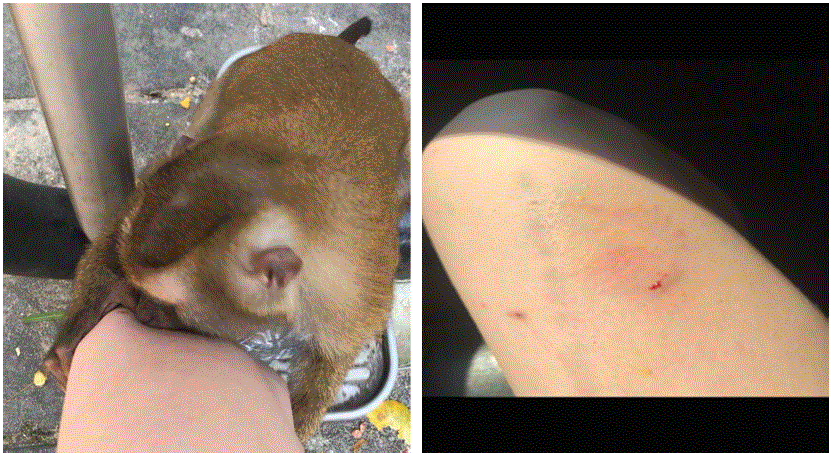Key points
- Specimens from the exposed person and, when feasible, the associated monkey, should be collected for virus culture and serologic testing.
- Direct culture of B virus is the standard for diagnosis of infection, but PCR testing provides advantages like quicker results.

Types of tests
Direct culture
Direct culture of B virus has been the standard for diagnosis of infection, but requires a biosafety level 4 (BSL-4) containment facility to reduce the risk of exposure for laboratory workers. The collection of samples must be delayed until symptoms appear.
The specificity of B virus serologic methods has improved substantially. However, the assays rely on specimens obtained weeks after the possible exposure. They are not useful for making decisions about treatment, which must be made soon after a person is exposed.
Polymerase chain reaction (PCR)
The availability of PCR protocols that reliably discriminate B virus from HSV should permit the direct detection of B virus infection without needing to resort to the more hazardous procedure of culturing virus.
PCR has the additional advantage of being more rapid, potentially providing results in a matter of hours rather than days. However, the process shares the limitation with B virus culture that sample collection must be delayed until symptoms appear.
A quantitative, real-time PCR method has been developed by the National B virus Resource Center and is being evaluated for use as a clinical diagnostic. While a PCR diagnostic assay would substantially reduce the risk to diagnostic laboratory workers, the samples tested could contain viable B virus and need to be handled with appropriate caution.
Specimen collection
Diagnostic testing resources
Obtain specimens for virus culture and serologic testing from the exposed person and, when feasible, from the associated monkey.
From exposed person
Use B virus serology to determine whether a patient who was B virus seronegative has begun making antibodies to B virus.
When to collect serum for serologic testing
- Immediately following exposure and after appropriate cleansing protocol is complete.
- Three weeks post-exposure.
- Prior to the onset of symptoms, collect sera approximately 3 weeks apart to determine whether seroconversion to B virus infection has occurred.
- Prior to the onset of symptoms, collect sera approximately 3 weeks apart to determine whether seroconversion to B virus infection has occurred.
If collecting samples for PCR testing
- Should only be collected if symptoms consistent with B virus disease develop. Then collection of saliva or material from blisters (if present) can be tested.
- Should not be obtained at the time of exposure, as the act of collection could push infectious virus more deeply into the wound.
- Not recommended immediately following cleansing. This is because the sample is unlikely to contain detectable levels of virus and could lead to false negative results.
From associated monkey
Collect a sample of saliva for B virus PCR testing to determine whether the monkey is actively shedding B virus. A sample of serum should also be collected and tested to determine whether the monkey is seropositive for B virus.
Virus detection
Diagnoses of B virus infections are hampered because herpes simplex virus (HSV) and B virus are closely related. Both viruses are members of the Alphaherpesviridae). As such, antibodies produced in response to either virus have substantial levels of cross-reactivity. This can increase the potential for both false-positive and false-negative results.
The development of diagnostic methods that can reliably differentiate between HSV and B virus infection was an essential first step in advancing B virus detection for the National B Virus Resource Center.
